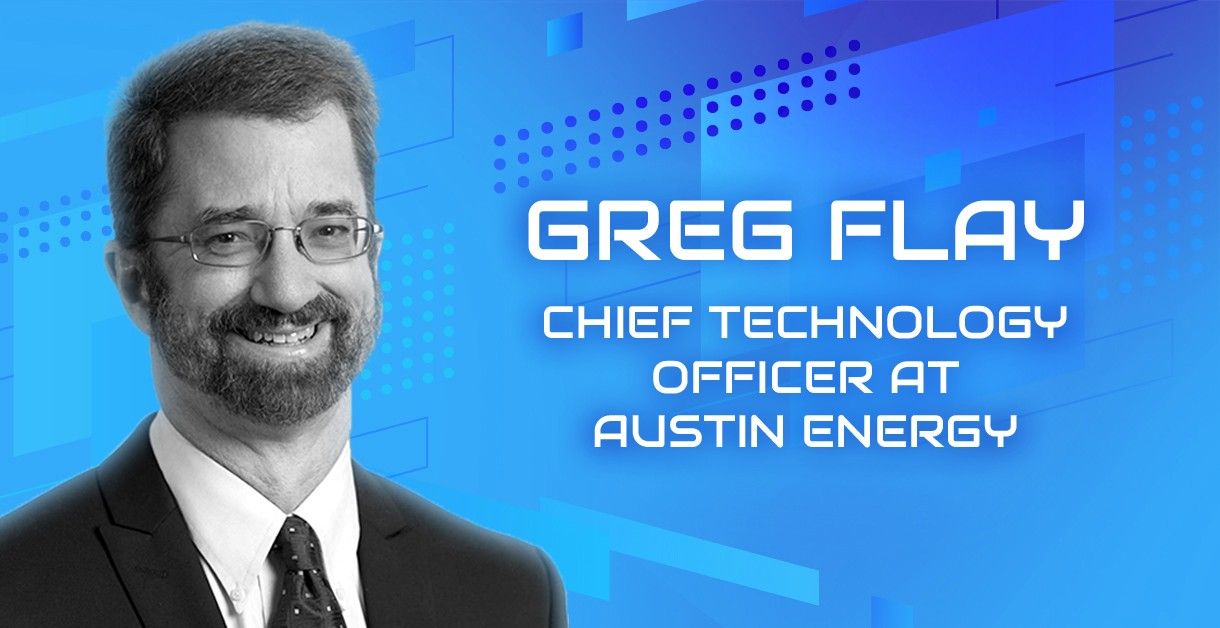
Let’s start by discussing how technology innovation is impacting the energy industry.
GREG: Historically, in the energy industry, there’s been a very clear dividing line between information technology (IT) and operational technology (OT). People running supervisory control and data acquisition systems (SCADA), energy management systems (EMS), or distribution management systems, for example, were handled separately from the IT business systems that are used to manage customer care, billing, marketing, and other functions of this nature. But now the industry is working to grapple with the convergence of these technology arenas as well as fundamental changes in customer expectations.
The ease with which customers engage with Amazon or online retailers has become the norm, and they expect this same level of convenience from all the products and services they acquire, including utility services. Therefore, we need to adapt to these changing expectations.
At the same time, we need to adapt to the IT/OT convergence that is allowing us to create automated or advanced metering infrastructure. With two-way meter communication, we can do remote starting and stopping of services and implement time-of-use offerings from a sales standpoint, and there are many other possibilities.
As if this wasn’t enough change, we are in the midst of a complete revamping of the modern electric grid. We’re moving from traditional centralized, usually fossil-based or nuclear-based resources, that distribute power in a one-way direction. We’re now morphing into distributed energy resources with solar panels, large-scale wind farms, and people with battery storage at their houses. We’re also examining the use of electric vehicles and the impact those vehicles will have on the electric grid.
So there are all kinds of new options in terms of how electrons get onto the grid and are consumed by users.
The energy industry is a very established legacy industry. How is the market overcoming legacy thinking so that it can move quickly while still adhering to the strict compliance and reliability standards that are so necessary?
GREG: The energy industry is known for tending to be conservative. Historically, we would put a utility asset such as a steam turbine into service that was expected to run for thirty or forty years. The idea that we need to swap out smart meters that are only three years old because new technology has come along is very challenging and can be a very expensive proposition.
At the same time, factors like reliability and regulatory compliance are requirements—they’re not negotiable. So whatever we’re doing has to be done with reliability and compliance in mind, or the initiative is a non-starter. But, whether the industry is ready for it, there are market and customer expectations driving the need to change much more rapidly than ever.
One of the things we are looking at is the underlying computing infrastructure. Traditionally, everything has been on-premise, locked behind the door in a data center. In many cases, the utility owns and maintains completely private networks that allowed data transmission among all our on-premise computing locations without relying on public networks.
Now we need to adopt cloud technologies and SaaS solutions—functionality that historically would have been built, operated, and delivered via a utility’s own data centers. This is uncomfortable for utilities, but there’s no other way to adapt and scale at the pace that is required without adopting these highly configurable cloud technologies.
Traditionally, your electric utility was your provider because retail choice didn’t exist. In many areas of the country, retail choice does now exist, and you can choose your electric provider. Even in areas with a single electric utility, like Austin, electricity providers need to stay competitive market, as the consumer now has choices in terms of their own on-site solar and wind generation, as well as battery storage.
How is Austin Energy adapting to these needed changes?
GREG: Austin Energy has been ahead of the pack in terms of smart grid technology innovation leadership. Significant technology investments made ten to fifteen years ago allowed us to be one of the first adopters of technologies like our advanced distribution management system (ADMS). Today, there are utilities only now in the process of implementing ADMS technology, and still others with no plans to do so. There is pain that comes with being ahead of the curve, but it has put us in a much better position.
Another example of Austin Energy technology innovation has been a joint exercise with the Department of Energy to develop the Austin SHINES project. The goal of the project was to figure out how to better manage and optimize distributed energy resources (DER) and energy storage options at residential, commercial, and utility-scale, both leveraging DER aggregators and without them.
The final huge transformation I’ll mention is that we are working to become a data-driven company. Thirty years ago, a nice utility meter reader would come to your house and read your electric meter once per month, or perhaps every other month. We would gather one data point: your energy consumption for that month.
Our current metering equipment gathers 15-minute interval meter data nearly one hundred times per day. Each time we gather data from a modern AMI meter, we have the ability to gather anywhere from thirty to one hundred data points. Doing the math, that’s easily 100,000 times the data volume we used to collect. It’s nothing short of an avalanche of data and is a challenge we, and other utilities, have never had to contend with before.
We must make use of all these data by creating analytics and insights that will help drive the utility’s ongoing innovation. Nearly every utility has a significant business-driven initiative around data analytics to address meter data analysis specifically.
How can an organization build a culture to drive technology innovation, especially within large legacy industries like the utility industry?
GREG: Traditionally, energy utilities have been very siloed in nature—customer and billing in one organization using one set of systems, transmission, and distribution in another, and power generation in yet another. The interaction was limited among these siloes, and doing cross-silo analytics was difficult. Breaking down these silos is a tremendous cultural and technical challenge, but it is also a prerequisite for enabling the technology innovation being demanded of us to, for example, deliver a 360-degree view of our customers.
About three years ago, Austin Energy engaged in a strategic planning exercise that focused on the strategic goals of the organization and brought together multifunctional teams from different areas of the utility to develop and execute on initiatives to deliver on these goals.
One piece of this strategic work was the Data and Analytics initiative, composed of four pillars. First, we needed to have a better understanding of what data was available within Austin Energy. Second, we needed to simplify and streamline governance and processes for accessing the data. Third, we needed to standardize on a common toolset for analytics. Lastly, we needed to build a “culture of analytics” that sought to drive decisions through the use of data. Each of these efforts has brought together folks from across the organization to collaborate and address these issues, and we’ve made a huge amount of progress. There’s quite a bit of road ahead of us still, but I’m extremely proud of our success to date.
Have you been competitive in attracting talent, especially young people, to work for Austin Energy?
GREG: We expend a substantial amount of effort to attract and retain a diverse workforce. We have many diversity and inclusion efforts that are not necessarily common across the utility sector. Our COO, for example, makes a point of having a short discussion around diversity and inclusion at the beginning of each staff meeting.
I think the CTO team under me is an excellent example of where we’re going with the utility across the board. It’s extremely diverse in terms of gender, race, age, and sexual orientation. The team is an example of a high-performing, heterogeneous team. A big part of our successful performance is the diversity of thought on the team.
Attracting the right technology talent within this very tight labor market is a challenge. How are you handling this?
GREG: Many people, especially young people, are motivated by having a purpose-driven career. They want to know their work is meaningful in a broad context. The first words at the top of the Austin Energy website are “Customer Driven. Community Focused.” We are owned and operated by the residents of the City of Austin and we exist to improve the quality of life in our city. This laser focus on serving the community makes us attractive to the kind of people who want to be part of building a new, better tomorrow. Austin is a great city, and Austin Energy is a great place to work.
Our company, Sphere Software (https://sphereinc.com), is the sponsor and organizer of Techdebates.org and also finds great value in these follow-up discussions with industry experts. Sphere is a technology consulting and solutions company. Everything we do is designed to accelerate your business, remove technical constraints and eliminate staffing bottlenecks.





